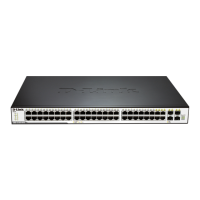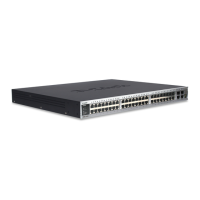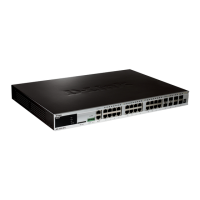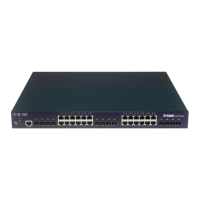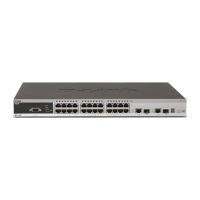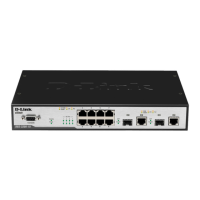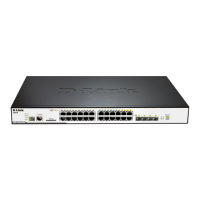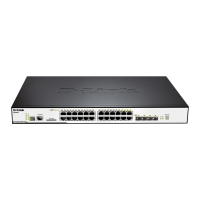xStack® DGS-3120 Series Layer 3 Managed Gigabit Ethernet Switch Web UI Reference Guide
412
Parameter Description
Interface Name Enter the name of the IPv6 interface. Tick the All check box to select all IPv6
Enter the DHCPv6 server IPv6 address.
Click the Apply button to accept the changes made.
Click the Add button to add an entry.
Click the Find button to locate a specific entry based on the information entered.
Click the View All button to display all the existing entries.
Click the View Detail link to view more information regarding the specific entry.
After clicking the View Detail link, the following window will appear:
Figure 9-20 DHCPv6 Relay Settings - View Detail window
Click the <<Back button to discard the changes made and return to the previous page.
DHCPv6 Relay Option 37 Settings
This window is used to configure the DHCPv6 relay agent information for processing Option 37 within the Switch.
To view this window, click Network Application > DHCP > DHCPv6 Relay > DHCPv6 Relay Option 37 Settings
as shown below:
Figure 9-21 DHCPv6 Relay Option 37 Settings window
The fields that can be configured are described below:
Parameter Description
State
When enabled, the DHCP packet will be inserted with the Option 37 field before being
relayed to the server. When the state is disabled, the DHCP packet will be relayed
Remote ID
Specifies the content in the Remote ID.
Default - The remote ID will include the VLAN ID, Module, Port, and System MAC
address of the device.
CID With User Define - The remote ID will include the VLAN ID, Module, Port, and user
defined string.
User Define - The remote ID will be a user defined string. Enter the user defined string
in the space provided.
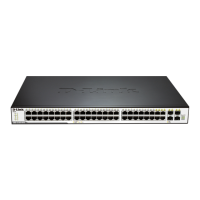
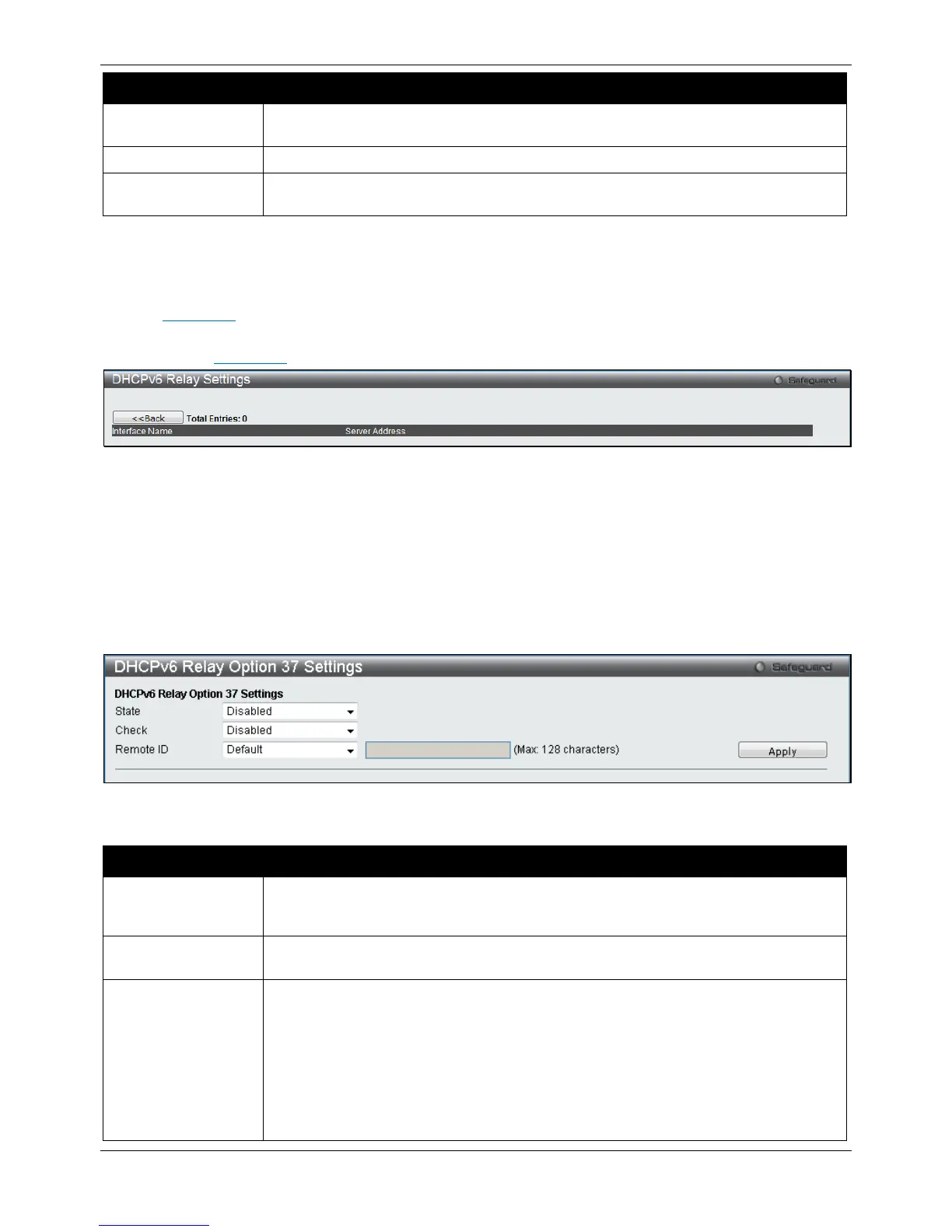